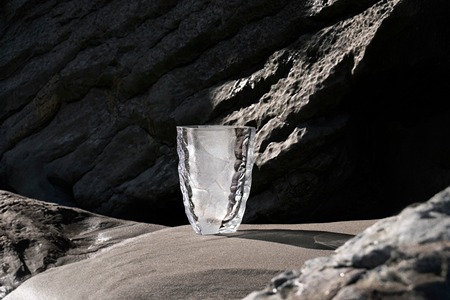Ancient suds in modern mugs

 |
| Collecting wild yeast after dough fermentation. [Photo by Aaron Berkovich/China Daily] |
"The idea," says Jing-A's Acker, "is to pick up where they left off with their research and analysis, and to bring this ancient ale to life. To make our brewing re-creation as authentic as possible, we want to use locally sourced Shaanxi ingredients found in the recipe - broomcorn millet, Job's tears, tubers, etcetera - as well as local fermentation practices."
After visiting the archaeology warehouse, our group proceeds to a wet market nearby for some shopping and friendly debates. About authenticity. About snake gourds and honey. About what beer really is.
While the presence of barley makes the ancient brew fit our modern notion of beer, the "recipe" remains open to interpretation.
"One of the interesting questions here is proportions: How much snake gourd and how much Job's tears?" says Laszlo Raphael, who with his wife, Michele Wong Raphael, operates the microbrewery Moonzen in Hong Kong. The remnants in the vessels may not represent the actual proportions used, and flavoring ingredients more perishable than grains leave no traces after 5,000 years. Honey, for example, has been used in Chinese liquor fermenting for about nine millennia, and sweet and sour additions such as lily bulb, citrus peel, star anise, hawthorn, mulberry and plum were all in wide use when the Mijaya site was in beer-making mode.
The absence of hops in the recipe sparks another discussion. Did various tubers or other ingredients give the ancient brew the sort of bitterness hops does today?
"Sourness was a more likely element than bitterness," suggests Laszlo Raphael of the ancient beer's flavor, echoing the Stanford study leader Wang, who guessed "it would taste a bit sour and a bit sweet."
The Jing-A and Moonzen brewers, who plan to release their versions of the beer on Friday, were eager to find and use "wild" yeast from the Xi'an area. That would give the modern brews an extra patina of authenticity.
"When it comes down to it, we're all really just yeast wranglers - they do all the work," says Raphael. "Without yeast, it's just sugar-water."
Such naturally occurring yeasts can be found on the skins of fruits and berries (such as grapes, apples and peaches), in plant saps and even in the air.
The brewers try a little foraging at first, but eventually get a "very aggressive" yeast starter from a local farmer who makes mijiu, a traditional grain alcohol, by first making a breadlike dough from local fermented grains. Part of the brewers' art will be to monitor the yeast's attenuation, or how much sugar it consumes.
After a few weeks in brewing tanks, the result will be offered to local beer lovers in Beijing and Hong Kong on Friday.
"It's kind of a fun thing for us," says Jing-A's Acker. "We're not brewing a lot of it, so making money is not really our goal here. In fact, we will donate the profits to the research programs at Stanford and Shaanxi to promote more study.
"But the idea of a 5,000-year-old beer recipe from China seemed so cool, we wanted to explore that ancient beer history and give beer fans (including ourselves!) a chance to taste China's first barley-based beer."




































